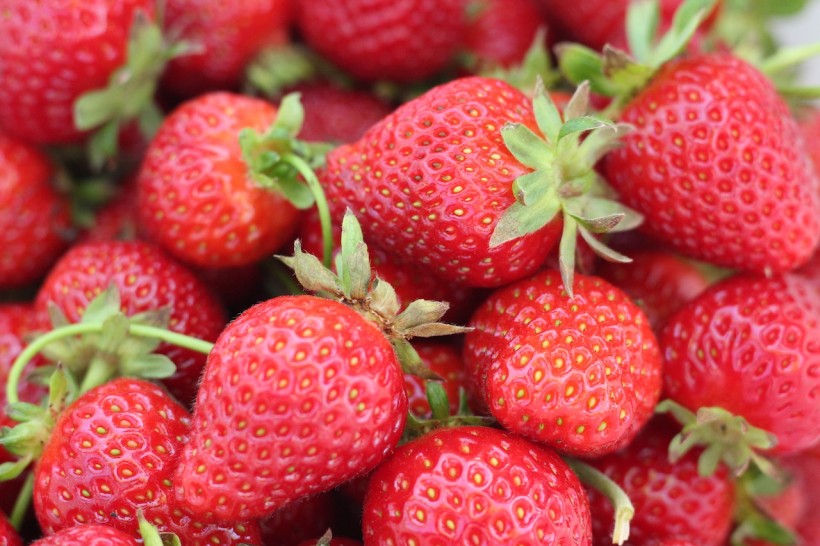The widely accepted categories for fruit and vegetables are sometimes incorrect, as there are different criteria when they are identified from a botanical and culinary standpoint. Berries, on the other hand, are yet another story. Some fruits and vegetables we know are classified as berries, while the popular strawberry is not.

Strawberry as A Multiple Fruit
Botanists consider the strawberry as a 'false fruit' or a pseudocarp because it is, in fact, multiple fruits. Each strawberry contains numerous small single fruits implanted in a succulent receptacle or the red fleshy part for which the strawberry is known. The actual fruits are the brownish or whitish specks that give the strawberry its distinct appearance. Because of this, strawberry is also considered an accessory fruit along with figs and pomegranates.
The actual fruits of a strawberry are the tiny speckles that are often mistaken for seeds. They are not seeds at all because they are minuscule fruits called achene. Breaking the achene apart and examining it under the microscope will reveal the true seeds.
So why is strawberry not considered a real fruit? In botany, a fruit refers to the mature and ripened ovaries of flowers with seeds that develop from the enclosed ovule following fertilization. Strawberries are inside-out fruits where the real seeds are contained within the achene.
It is also incorrect to classify strawberries as a berry. Scientifically speaking, a berry contains seeds and pulps called pericarp, which develop from a flower's ovary. True berries from the botanical description include banana, pumpkin, and cucumber. Meanwhile, the flowers of strawberries are composed of several ovaries combined to form a single flower.
READ ALSO: Diabetes Improvement: Researchers Reveal How Bilberries Help Lower Blood Sugar Levels
Nutritional Value of Strawberry
Strawberry belongs to the genus Fragaria, with more than 20 flowering plants in the Rosaceae family. The common species Fragaria ananassa originated in Europe in the 18th century. It resulted from a hybrid of two species of wild strawberries from North America and Chile.
Regardless of its classification as fruit or berry, one thing is for sure: it is widely consumed for its nutrient content and luscious flavor. Strawberry is one of the world's most popularly consumed 'berries.'
Fresh strawberries are composed mostly of water (91%). Because of this, its total carbohydrate content is shallow and will not lead to an increase in blood sugar levels when consumed. Most of its carbohydrates come from simple sugars, including sucrose, fructose, and glucose. Aside from this, it has a relatively low glycemic index score of 40.
Meanwhile, fiber comprises about 26% of the carbohydrate content of strawberries. This means that for every 100-gram serving of strawberry, 2 grams of soluble and insoluble fibers are provided.
Regarding vitamins and minerals, strawberries are rich in Vitamin C, manganese, folate, and potassium. Other nutrients are in smaller amounts, including phosphorus, iron, magnesium, copper, and vitamins B6, K, and E. High amounts of antioxidants and useful plant compounds are also present in strawberries. These include pelargonidin, ellagic acid, ellagitannins, and procyanidins.
RELATED ARTICLE: Guinness World Records Confirms 'Chunky Boi' as World's Heaviest Strawberry, Weighing Like an Adult Human Heart
Check out more news and information on Berries in Science Times.














